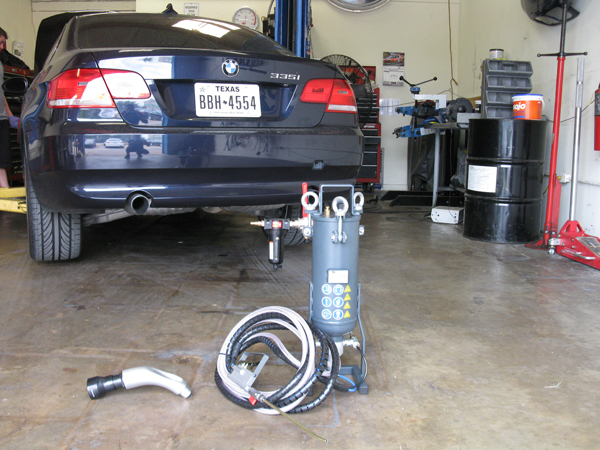-
Call Today:
(972) 418-1800

So what is this Walnut Blasting, which BMW’s requires this service, why do I need the service, and what is the cause. These are common questions we get here at Ultimate Bimmer Service so we decided to post some helpful info on carbon build-up and the required removal.
For starters ONLY BMW’s with direct injection are affected by this issue. BMW first offered direct injection here in the US markets with the 760Li E65/66, and more popular in the 2007 335i models. Following we have listed the BMW engines and models with direct injection. Current and past BMW direct injection engines are the N54, N55, N63, N73, N74, N20, S63 and most future models. These are found ranging in the BMW E90 335i, BMW E82/88 135i, BMW E60 535i, BMW E65/66 760Li, BMW F01/02 750i & 760i, BMW F10 528i & 535i (excluding first year model 528i), BMW F30 328i&335i, BMW F25 X3 3.5, all BMW E70 X5 MY2011 and newer all share amazing advantages in modern engine technology.
However, direct injection moves the fuel injector from OUTSIDE the combustion chamber just before the intake valve, to INSIDE the combustion chamber directly over the top of the piston. This was done to allow for greater fuel atomization, creating a more homogeneous mixture, and precise timing of when the fuel is introduced to the combustion chamber. Allowing higher compression ratios/cylinder pressures/boost psi, improving fuel economy and engine output. But now that the injector has been moved from just before the intake valve to inside the combustion chamber we no longer have detergent rich fuel being introduced at the back of the intake valve and final leg of the intake port just before it enters the combustion chamber.
Just picture all the gas commercials you see on TV of how using a high quality gas verses ”brand X” gas will keep your engine clean. The most commonly shown part is the intake valve usually with carbon build-up if you don’t use their fuel, and of course sparkling clean if you do! This not false advertisement, it is true, with typical manifold port fuel injection, detergent laden fuel does keep the intake valve and port fairly clean. BUT, now we have moved the fuel injector inside the combustion chamber, so no more detergent loaded fuel for your intake valve and port, thus leaving the intake port and intake valve vulnerable to carbon deposits and build-up.
Now we can’t go into the physics, chemistry, and fluid dynamics of what causes the build-up in the first place as there is not enough space and plenty of reasons. But the end result is build-up on the back side of the intake valve and the walls of the intake port. Causing a restriction at the most restricted area of the inlet tract. Translating into what the BMW driver will experience as a rough running engine, lack of power, a check engine light, or a power drop at varying RPM ranges, to as bad as noise do to the valve not completely closing due to heavy build-up. Cleaning carbon build-up inside an engine can be a very costly and laborious routine. But thankfully BMW has devised special equipment to allow for intake port cleaning with the engine assembled and in the car. The procedure uses walnut shells ground to between .45 and .80mm or SAE20/30. Walnut blasting is just like sand blasting but uses walnut shells which as organic soft abrasives will not damage the intake valve, valve guide, or intake port. This same process is used to clean aircraft engines, delicate electrical circuit boards, and has been around since the late 1800’s. Here at Ultimate Bimmer Service we strive to offer everything possible to keep your BMW running great and outperforming the competition, and until now this special BMW equipment has only been available at the dealer. So when your BMW needs the best repair or service in the Dallas/Ft.Worth or surrounding areas just call Ultimate Bimmer Service at 214-254-4470.
[nggallery id=2]